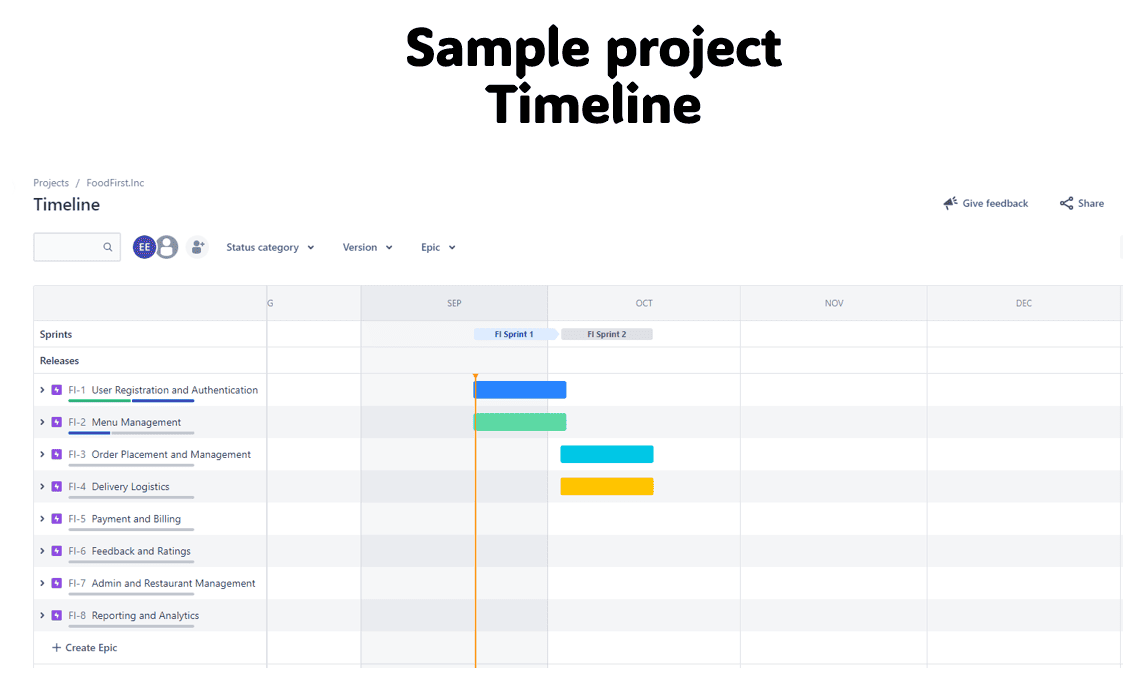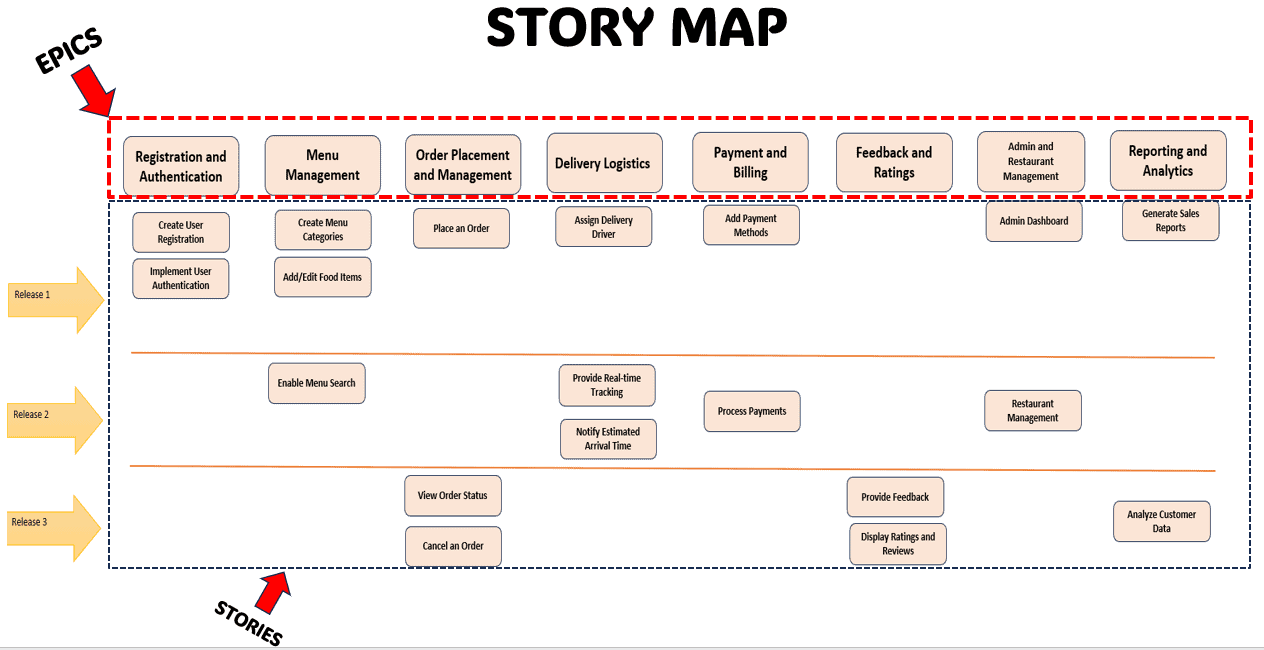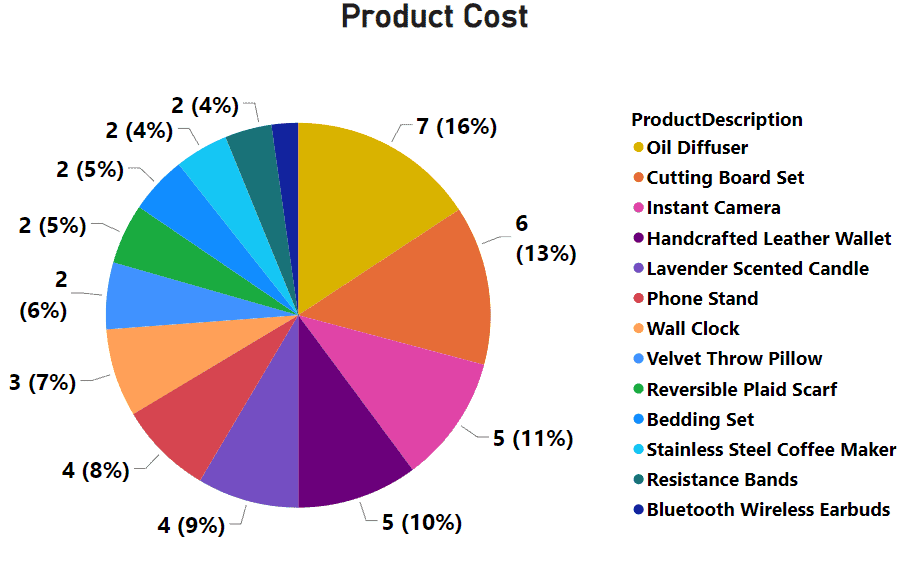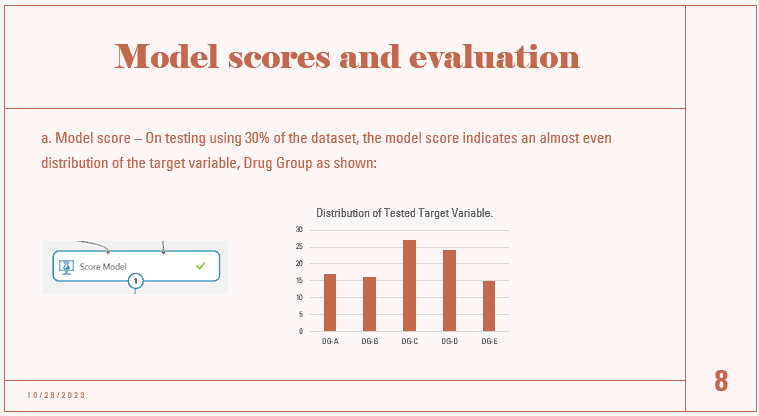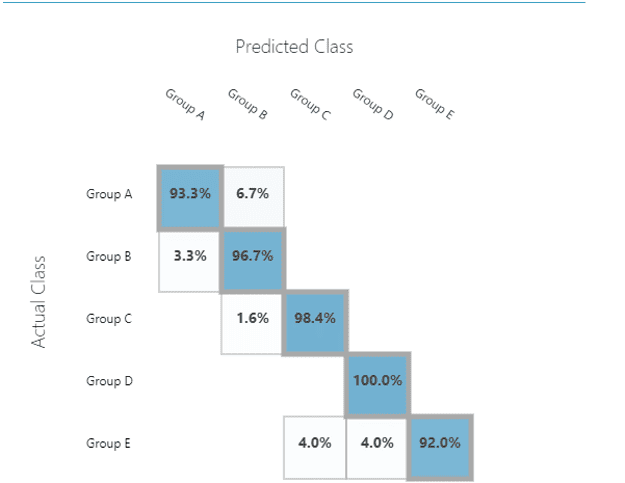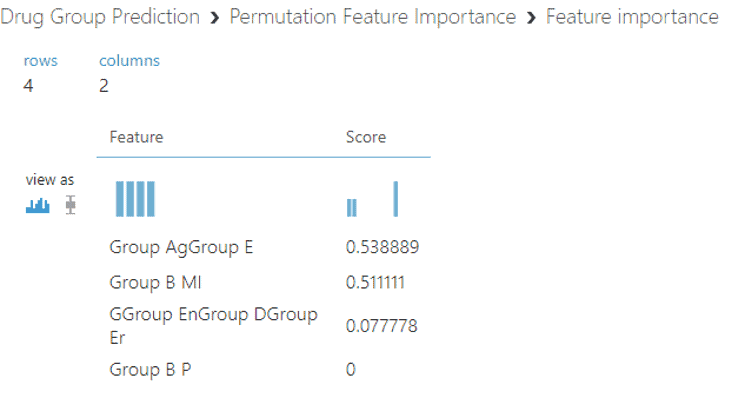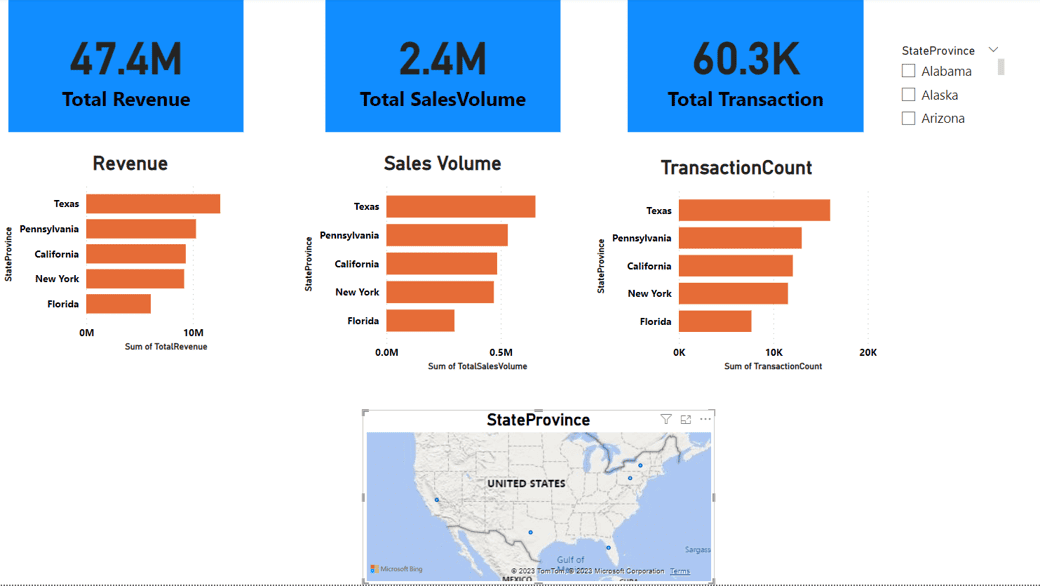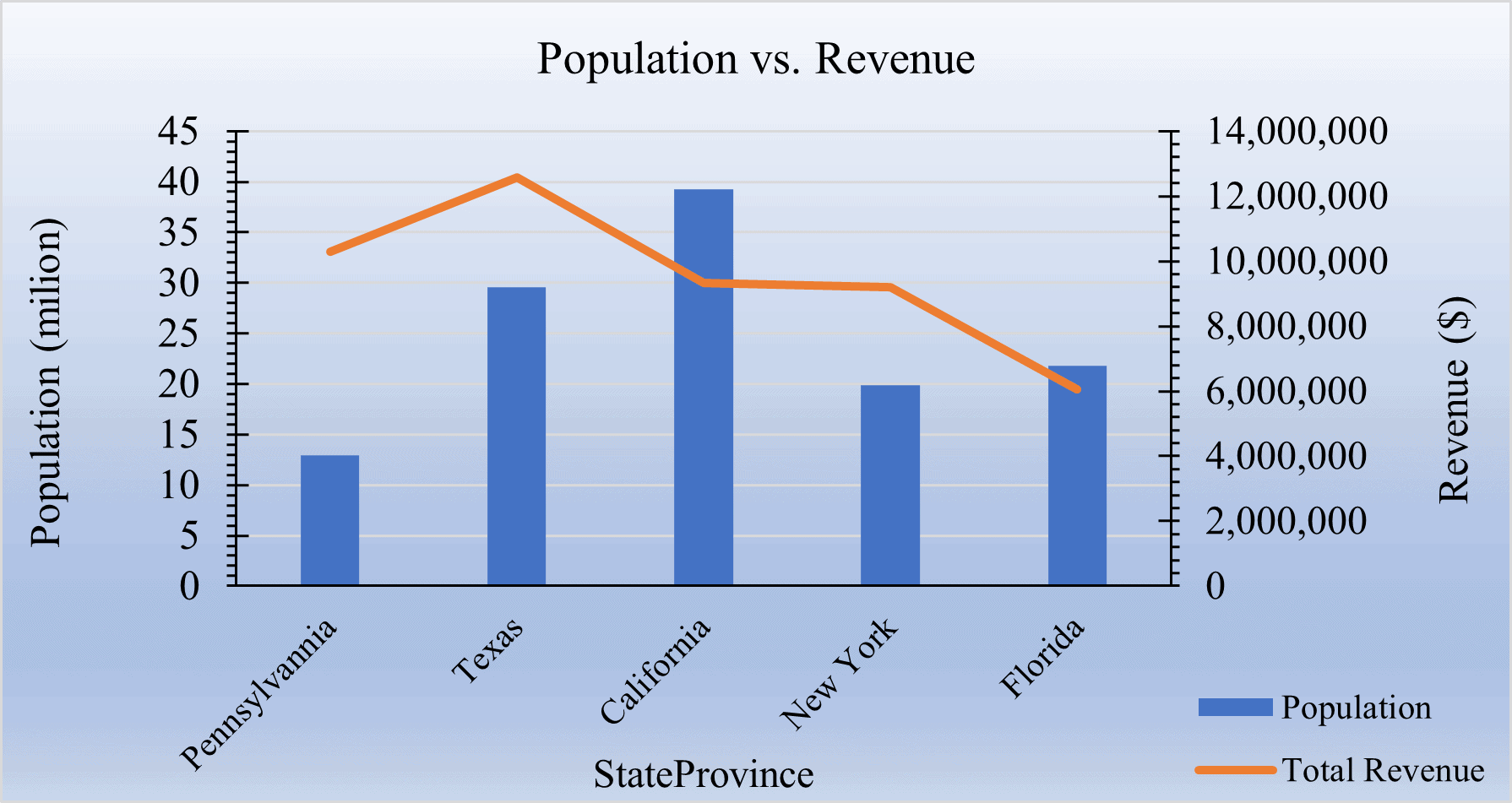Project Gallery
Business Intelligence
- Supply Chain Manufacturing & Management
- Optimising operations in an agro-based start-up
- Food Delivery Service Workflow
- Product Price Analysis
- Demographic-based Drug Prediction Model
- Sales Channel Performance Tracking
- Customer and Location Analysis
In this project, a fast-growing retail chain with over 25 retail outlets was involved. StoreFIT Limited was looking to improve their supply chain by developing a system to predict product purchase and safety stock levels, as well as a robust supply chain dashboard. They were also interested in evaluating their current back-ordering process and developing an ERP system that captured their Purchase Order, Manufacturing Order, Sales Order, CRM system, and a website to display their products for purchase.
Implemented an integrated operational and analytical system that enhanced efficiency and decision-making across human resources, vendor management, sales, and production operations in an agro-based start-up. The outcome was streamlined business processes, improved data-driven decision-making, and enhanced operational efficiency across all departments.
The project encompasses the creation of a mobile application and web platform that allows customers to browse menus, place orders, track deliveries in real-time, and provide feedback. Additionally, it includes tools for restaurant administrators to manage their menus and orders, as well as a robust backend system to handle order processing and logistics.
This project aimed at examining and interpreting the pricing trends of various products in the US market. This analysis typically involved collecting and scrutinizing data on product prices, quantity orders, understanding factors that influence the prices and orders as well as identifying patterns or anomalies. The goal was to provide insights for consumers to make informed purchasing decisions and for economists to understand market dynamics. Key elements of this project included data collection, statistical analysis, market research, and reporting findings in a clear, actionable manner.
Our project developed a cutting-edge model leveraging demographic data—age, gender, blood pressure, and BMI—to predict an individual’s drug group. This advanced classification model offers valuable insights for personalised medication and healthcare optimisation.
By leveraging cutting-edge forecasting techniques, this project delivered pivotal insights into revenue trends, aiding strategic decision-making and resource optimisation. In the long run, the power of data-driven forecasts for market expansion and informed growth strategies were uncovered.
This project involved a comprehensive analysis of the 3-year revenue forecast for targeted regions and provinces. Using time series forecasting techniques, the analysis unveiled invaluable insights to guide strategic planning, resource allocation, and informed decision-making for future market endeavours for my client.
Academic Research
- Explainable Machine Learning for Autonomous Vehicle Positioning Using SHAP
- Improved prediction of clay soil expansion using machine learning algorithms and meta-heuristic dichotomous ensemble classifiers
- Machine learning regression and classification algorithms utilised for strength prediction of Improved clays
- Fibre-Reinforced Clay Blended with By-Product Cementitious Materials
- Incorporation of a nanotechnology-based product in cementitious binders to mitigate soil heave
- Sustainable nanotechnology-based stabilised soil
Despite recent advancements in Autonomous Vehicle (AV) technology, safety remains a significant challenge for commercialization and development. The navigation system is crucial for AV safety, with road localization relying on accurate Global Navigation Satellite System (GNSS) positioning. However, GNSS may experience signal loss in urban environments. We previously proposed the Wheel Odometry Neural Network (WhONet) to provide continuous positioning in GNSS signal absence, integrating GNSS output with wheel encoders’ measurements. To ensure safety, qualitative assessment of WhONet predictions is needed, necessitating explanation for its reliability. We use Shapley Additive exPlanations (SHAP) to examine WhONet decision-making on an Inertial and Odometry Vehicle Navigation Benchmark Data subset. Our study highlights that rear wheels contribute most to position uncertainty error during approximate straight-line motion.
Soil swelling disasters pose significant geo-hazard risks, necessitating accurate estimation of soil expansion for infrastructure safety. This study introduces an innovative approach using kernelized machines (BLR, BPM, SVM, D-SVM), linear regressors (REG, LR, ANN), and tree-based algorithms (RDF, BDT). Meta-heuristic classifiers (VE, SE) are also utilized for the first time. Various feature combinations influencing soil swelling behavior are explored. Initial results show BLR deviates the most from actual swell-strain, with REG and BLR slightly outperforming ANN. Meta-heuristic learners (VE, SE) exhibit the best performance (highest R2 value of 0.94, RMSE 0.06% for VE). CEC, plasticity index, and moisture content are identified as important features. Kernelized binary classifiers (SVM, D-SVM, BPM) achieve higher accuracy (average accuracy and recall rate of 0.93 and 0.60) compared to ANN, LR, and RDF. Sensitivity-driven diagnostic tests suggest meta-heuristic models perform best with k-fold validation. It is recommended to apply these concepts during preliminary geotechnical or geological site characterization using the best-performing meta-heuristic models.
This study applies various machine learning (ML) models to predict soil strength after part-substituting OPC with PFA and GGBS. Stand-alone ML models (BLR, REG, ANN, LR), tree-ensemble ML models (BDT, RDF, DJ), and meta-ensemble ML models (VE, SE) are used. Regression analysis shows higher variance in OPC-substituted predictor variables compared to OPC-alone soils. REG model provides accurate strength predictions (RMSE 0.39, R2 0.86), while tree-based models and meta-ensemble models perform even better (RMSE 0.33-0.06, R2 0.90-0.91). For ML classification, mANN performs well (accuracy 0.78, precision 0.67, recall 0.67) but falls short compared to meta-ensemble models (accuracy 0.80, precision 0.70, recall 0.71). Ensemble methods, particularly VE, demonstrate better performance across different validation methods, providing robust predictions for regression and multiclass classification problems.
Clayey soils experience strength and volume changes due to moisture and temperature variations. High cement content improves their mechanical properties, but environmental concerns call for greener techniques using industrial by-products and synthetic fibers. This study investigates polypropylene and glass fiber-reinforced cement-clay mixtures with GGBS, lime, and micro silica. Tests on unconfined compressive strength, linear expansion, and microstructure reveal that increasing fiber content enhances strength while reducing linear expansion. Fiber-reinforced mixtures meet ASTM standards for minimum compressive strength after 7 and 14 days of curing. This eco-friendly approach has potential for various subgrade reinforcement applications.
Sulphate-induced heaving in soils, often caused by calcium-based binders, leads to ettringite mineral growth. “RoadCem” (RC), a nanotechnology-based additive, has shown potential to reduce this heaving. Research focused on substituting cement with ground granulated blast furnace slag (GGBS) and adding RC to sulphate-bearing soil stabilizers. Lab tests, including swelling and compression, were conducted. Results showed a 67% reduction in heave with 1% RC and 50% CEM I replaced by GGBS and RC. RC outperformed GGBS alone, showing almost 30% more heave reduction. Unsoaked soil strength increased with RC inclusion, and scanning electron micrographs revealed significant reduction in ettringite minerals with RC.
RoadCem (RC) is a nanotechnology additive containing synthetic zeolites and alkali earth metals. It stabilizes soil by partially replacing cementitious materials, aiming to reduce OPC usage by 50% with RC and GGBS. Lab tests show significant strength improvement in 7 days with RC, reducing swelling to 0% after 28 days. RC’s microstructure enhances cementation, with GGBS more effective than PFA in improving engineering properties. These findings offer promising solutions for reducing carbon footprint through OPC replacement.


